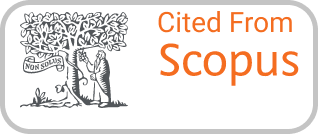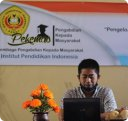Need Analysis of Waste Transporter Fleet in Pati District
DOI:
https://doi.org/10.46799/ijssr.v3i2.265Keywords:
Waste Volume, Garbage Transport, Garbage Transport SystemAbstract
Transportation of waste to carry waste from the transfer location or from the source of the waste directly to the Final Disposal Site (TPA). In Pati Regency there is a buildup of waste from shops, trades, and markets. The purpose of this study is to determine the waste transportation system, determine the needs of the waste transportation fleet, and determine the need for the number of waste transportation fleets in 2031. The method used is Stationary Container System (SCS) is used to analyze the waste transportation fleet, Waste Generation Prediction is used to predict volume population waste generation in 2031. There are currently 18 waste transport vehicles in Pati Regency, for dump trucks with a capacity of 8 m for 2 rites/ day, for arm roll trucks with a capacity of 6 m, which is 9 units. Garbage transport vehicles needed by Pati Regency in ideal conditions with the volume of waste generated 662.09 tons/day are 86 units for dump trucks with a capacity of 8 m for 3 rites/day and 26 units of arm roll trucks with a capacity of 6 m for 3 ritations/day. Meanwhile, the need for waste transportation vehicles in 2031 with an estimated waste generation of 714.87 tons/day is 104 units of dump trucks measuring 8m for 3 rites/day and 41 units of arm roll trucks for 3 rites/day measuring 6m³ ??and garbage carts/rickshaws in 2031 based on prediction required 661 units.
References
Alfian, R., & Phelia, A. (2021). Evaluasi Efektifitas Sistem Pengangkutan Dan Pengelolaan Sampah Di TPA Sarimukti Kota Bandung. JICE (Journal of Infrastructural in Civil Engineering), 2(01), 16–22.
As-Siddiqi, M. Z. R., Pirngadie, B. H., & Nurwulandari, F. S. (2017). Sanitasi Dalam Bahaya Bencana Banjir, Bagaimana Cara Menanganinya? Studi Di Kecamatan Baleendah, Kabupaten Bandung. Jurnal Planologi Unpas, 4(3), 861–874.
Ayen, D., Umar, A. F., & Elwindra, E. (2016). Gambaran Proses Pengolahan Sampah dan Dampaknya Terhadap Kesehatan Masyarakat di Wilayah TPA Bantar Gebang Bekasi Tahun 2016. Jurnal Persada Husada Indonesia, 3(11), 59–71.
Basriyanta. (2007). Manajemen Sampah. Kanisius.
Creswell, J. W., & Creswell, J. D. (2017). Research design: Qualitative, quantitative, and mixed methods approaches. Sage publications.
Lestari, S. D. (2022). Analisis Efektivitas dan Kontribusi Penerimaan Pajak Bumi Bangunan serta Bea Perolehan Hak atas Tanah dan Bangunan Kabupaten Pati.
Nigiana, J., Lestari, E., & Widowati, N. (2015). Manajemen pengelolaan sampah di Kecamatan Tembalang. Journal Of Public Policy And Management Review, 5(1), 161–174.
Plaza, P. I., & Lambertucci, S. A. (2017). How are garbage dumps impacting vertebrate demography, health, and conservation? Global Ecology and Conservation, 12, 9–20.
Pratiwi, A. P. (2019). Implementasi Peratuan Daerah Kota Medan Nomor 6 Tahun 2015 Tentang Pengelolaan Persampahan.
Priatna, L., Hariadi, W., & Purwendah, E. K. (2020). Pengelolaan Sampah di Tempat Pembuangan Akhir (TPA) Gunung Tugel, Desa Kedungrandu, Kecamatan Patikraja, Kabupaten Banyumas. Prosiding Seminar Nasional LPPM Unsoed, 9(1).
Sohn, J. (2006). Evaluating the significance of highway network links under the flood damage: An accessibility approach. Transportation Research Part A: Policy and Practice, 40(6), 491–506.
Sunarsih, E. (2014). Konsep pengolahan limbah rumah tangga dalam upaya pencegahan pencemaran lingkungan. Jurnal Ilmu Kesehatan Masyarakat, 5(3).
Syafrini, D., Susilawati, N., & Febriani, E. A. (2012). Bank Sampah: Pemberdayaan Masyarakat Berbasis Lingkungan Hidup (Studi Kasus Bank Sampah Barokah Asslam Perumahan Dangau Teduh Kecamatan Lubuk Begalung Padang.
Tryasmara, H. S., Wijayanto, D., & Jayanto, B. B. (2017). Analisis Komoditas Unggulan Perikanan Tangkap Di Kabupaten Pati. Journal of Fisheries Resources Utilization Management and Technology, 6(4), 175–179.
Yunianta, A., & Setiadji, B. H. (2022). Sistem drainase jalan raya yang berkelanjutan. Tohar Media.
Published
Issue
Section
License
Copyright (c) 2023 Aris Krisdiyanto, Kemmala Dewi, Diky Rohmat Setiawan, Ariel Kriswandatu, Althea Serafim Kriswandatu

This work is licensed under a Creative Commons Attribution-ShareAlike 4.0 International License.
Authors who publish with this journal agree to the following terms:
- Authors retain copyright and grant the journal right of first publication with the work simultaneously licensed under a Creative Commons Attribution-ShareAlike 4.0 International. that allows others to share the work with an acknowledgement of the work's authorship and initial publication in this journal.
- Authors are able to enter into separate, additional contractual arrangements for the non-exclusive distribution of the journal's published version of the work (e.g., post it to an institutional repository or publish it in a book), with an acknowledgement of its initial publication in this journal.
- Authors are permitted and encouraged to post their work online (e.g., in institutional repositories or on their website) prior to and during the submission process, as it can lead to productive exchanges, as well as earlier and greater citation of published work.













